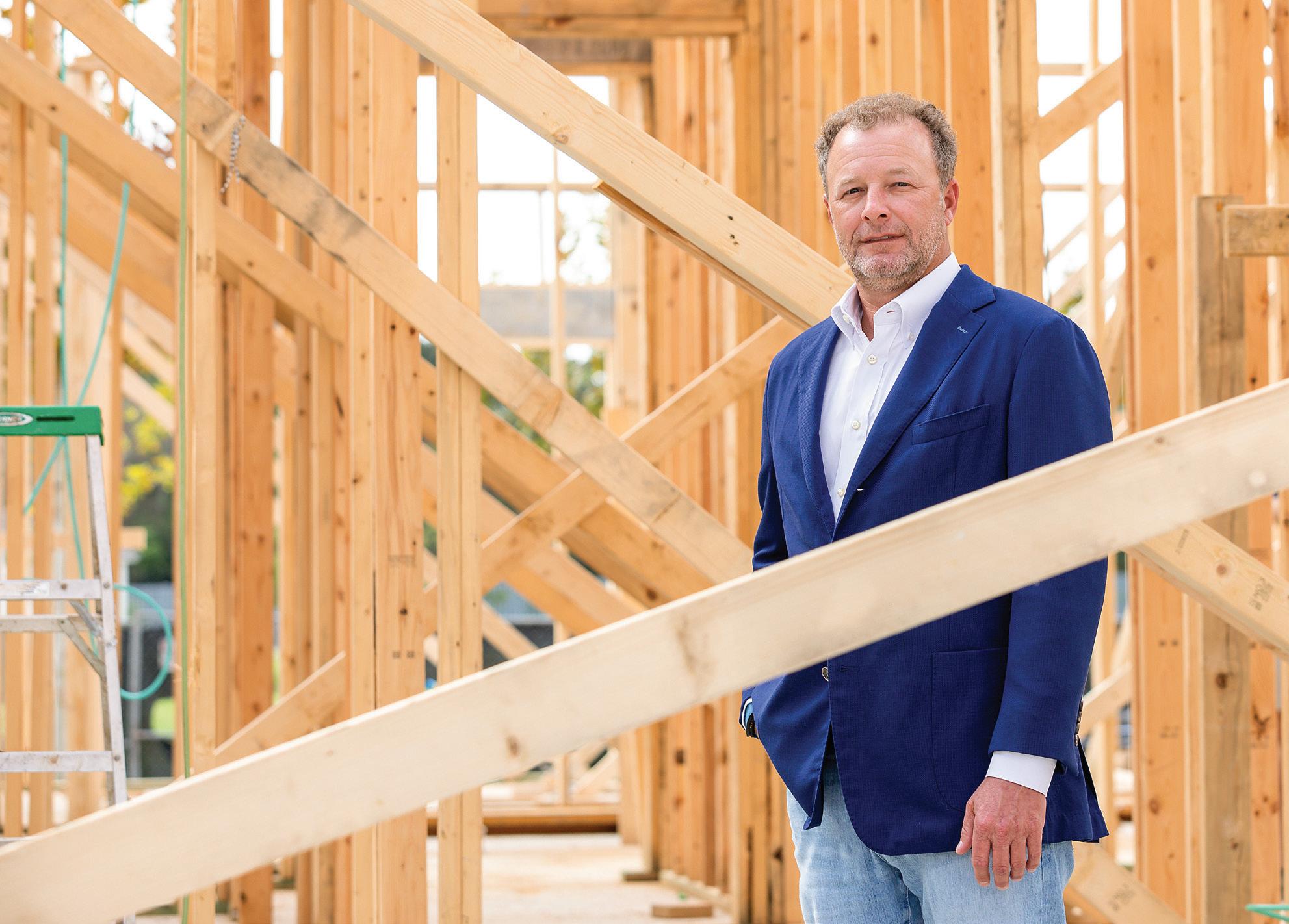
4 minute read
The source of the problem
The recovery from Hurricane Ida is exacerbating challenges for residential builders but creating opportunities for the commercial market. BY DAVID JACOBS
COLLIN RICHIE
SUPPLY SHORTAGE: Todd Waguespack, managing partner of Level Homes, says supply shortages are resulting in longer construction timelines and project delays, adding, “Every day it’s a different battle.”
TODD WAGUESPACK, managing partner with Baton Rouge-based homebuilder Level Homes, has seen it happen before. In fact, it has only been a year.
A devastating storm hits south Louisiana, and workers such as roofers and drywall installers who might otherwise be helping his company build new homes go off to chase recovery work. Last year, Hurricane Laura wrecked southwest Louisiana. This year, it was Hurricane Ida sowing destruction in the southeastern portion of the state.
“It’s going to happen again, I feel,” he says. “Especially with all the supply chain problems, it’s going to be a tough market.”
The construction industry, like so many others, has been struggling to hire enough workers and obtain needed supplies. Hurricane Ida may cause demand for both to spike, possibly leading to project delays and higher costs.
“A global pandemic coupled with natural disasters have exacerbated the supply chain and labor challenges,” says Karen Zito, president and CEO of the Home Builders Association of Greater Baton Rouge. “Acute shortages in some building materials have skyrocketed prices.”
Most builders have had to raise their prices on homes frequently and pre-order materials to combat rising building material costs and shortages, and many have implemented escalation clauses in sales and construction contracts, Zito says. Lumber prices have come down a bit recently, though they remain higher than pre-pandemic levels and the dip has been offset by increases to other building materials.
According to the U.S. Bureau of Labor Statistics Producer Price Index, the prices of goods used as inputs for residential construction including and excluding energy have risen 19% and 12%, respectively, year-to-date. For comparison, consumer goods prices were up 5.3% in August compared to August 2020, according to the Consumer Price Index.
The NAHB/Wells Fargo Housing Market Index is based on a monthly survey of National Association of Home Builders members and is designed to take the pulse of the single-family housing market. The survey asks respondents to rate market conditions for the sale of new homes at the time of the survey and in the subsequent six months as well as the traffic of prospective buyers of new homes.
“Higher construction costs and supply shortages along with rising home prices pushed builder confidence to its lowest reading since July 2020,” according to the version of the index released Aug. 17.
Waguespack says he has had trouble sourcing everything from garage doors to appliances. Longer wait times for supplies can lead to project delays, which can raise costs for everyone involved.
“Every day it’s a different battle,” Waguespack says. “Windows have been very tough.
While this doesn’t apply to Level Homes, which focuses on building new houses and developing neighborhoods, many companies in the construction industry will find business opportunities in the rebuilding effort. Workers, who may find themselves even more in demand than before, should benefit from higher wages.
“We absolutely restore and rebuild our communities after any disaster,” Zito says, while urging the public to use “licensed and insured builders.”
The rebuilding certainly will create opportunities for commercial builders. As this story was being written, state officials were assessing the damage to college and university buildings in southeast Louisiana. However, the damage appears to be less severe than what McNeese State experienced after Hurricane Laura, says Ken Naquin, CEO of the Louisiana Association of General Contractors.
Naquin doesn’t think the storms will cause pandemic-driven price increases for materials—which he says was caused largely by a national shortage of workers— to rise any further. While people should be wary of foreign materials, referring to the issues with Chinese drywall that cropped up after Hurricane Katrina, he says federal rules meant to encourage companies to buy supplies produced in the U.S. might also be part of the problem.
“The cost is what the cost is,” he says. “I don’t think the storm is going to increase the cost very
much. I think what it will increase is the wait time on the availability of the materials.”
The large general contractors will handle the big stuff like schools and office buildings. But Naquin says he’s concerned about whether the region’s smaller companies, which do such things as roof repairs, will be able to handle all the work.
Usually, when one segment of the construction industry is up, another is down. But Louisiana currently seems to be experiencing a general building boom that includes major infrastructure projects, Naquin says.
“We have contractors that are telling us they’re turning away work because they don’t have enough capacity,” he says, adding that some say they could use about 25% more workers.
“For the first time since probably [Hurricane] Laura of last year I’m a little worried about the capacity of the industry, and the capacity of the industry’s workforce, and availability of materials,” he says. “We’re still rebuilding Lake Charles.”

COLLIN RICHIE
Ken Naquin, CEO of the Louisiana Association of General Contractors, on the labor shortage impact
Borrow the Books, Keep the Ideas
Your digital library is always open.
Enjoy thousands of FREE e-books, e-magazines, e-audiobooks and more. Acquire a new skill or broaden your knowledge with a variety of learning tools and platforms.
VIEW CAREER RESOURCES
EXPLORE BUSINESS RESOURCES BROWSE ONLINE COURSES











